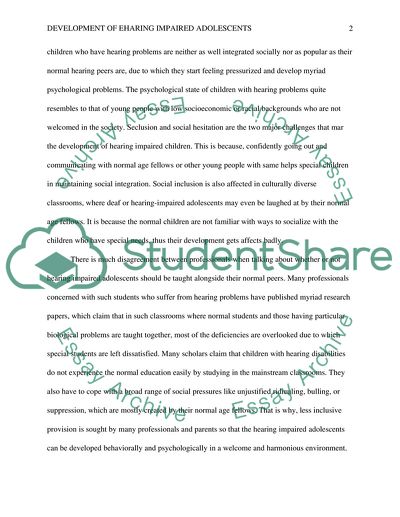Cite this document
(Development of Deaf and Hard of Hearing Adolescents Research Paper - 1, n.d.)
Development of Deaf and Hard of Hearing Adolescents Research Paper - 1. Retrieved from https://studentshare.org/medical-science/1752560-development-of-deaf-and-hard-of-hearing-adolescents-compared-to-their-hearing-peers
Development of Deaf and Hard of Hearing Adolescents Research Paper - 1. Retrieved from https://studentshare.org/medical-science/1752560-development-of-deaf-and-hard-of-hearing-adolescents-compared-to-their-hearing-peers
(Development of Deaf and Hard of Hearing Adolescents Research Paper - 1)
Development of Deaf and Hard of Hearing Adolescents Research Paper - 1. https://studentshare.org/medical-science/1752560-development-of-deaf-and-hard-of-hearing-adolescents-compared-to-their-hearing-peers.
Development of Deaf and Hard of Hearing Adolescents Research Paper - 1. https://studentshare.org/medical-science/1752560-development-of-deaf-and-hard-of-hearing-adolescents-compared-to-their-hearing-peers.
“Development of Deaf and Hard of Hearing Adolescents Research Paper - 1”, n.d. https://studentshare.org/medical-science/1752560-development-of-deaf-and-hard-of-hearing-adolescents-compared-to-their-hearing-peers.


